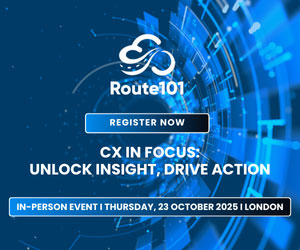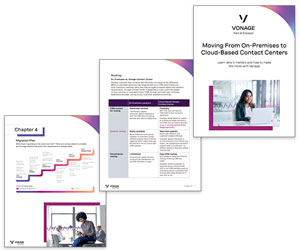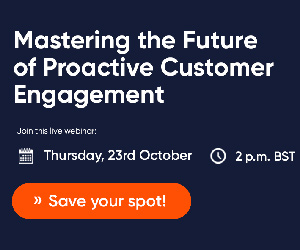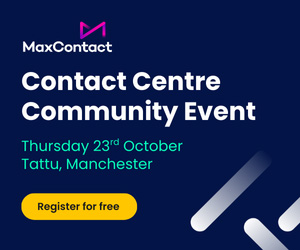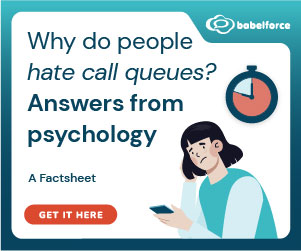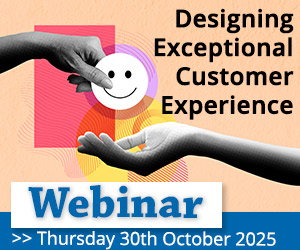We share five strategies that will help you to improve the quality of your engagement with customers and thereby improve your customer experience.
1. Develop a Customer Promise and Identify Specific Commitments
Deep insight and a profound understanding of the needs and expectations of your target customers is key to the design and development of a differentiated experience that engages customers.
If you have a detailed understanding of your key customers, the next step is to develop a Customer Promise which is a detailed description of what the organisation will deliver, now and in the future.
The well-crafted Promise should encapsulate what the organisation needs to deliver to generate high levels of satisfaction and loyalty from the company’s customers.
Once the Promise themes have been identified, you can then develop specific commitments which bring the Promise alive at key customer touchpoints.
John Aves, Chief Executive at cp2experience, says: “The power in developing a Customer Promise and related commitments is that it enables the organisation to be very specific about what executives, managers and front-line teams are required to deliver for customers. It should drive investment priorities, management coaching and front-line behaviour by customer facing teams.”
The power in developing a Customer Promise and related commitments is that it enables the organisation to be very specific about what executives, managers and front-line teams are required to deliver for customers.
John Aves
“As an example, we found through our customer insight research with a mobile phone client that loyalty was a key value for customers. They got annoyed when they saw new customers being offered better deals than they were as long-standing, loyal customers. This insight helped us develop the Promise theme ‘we reward customers for continuously doing business with us’.”
Off the back of this we developed the following commitments:
- The longer you are with us or the more you spend with us, the more we will reward you
- We offer our existing customers preferential services, prices and upgrades
- We will thank you for your business and hope to delight you from time to time!
All of this means that we are developing a customer proposition that’s based on what our customers need and value, which is great for engaging them with your brand.
But just one thing to watch out for, ensure that you share your commitments with marketing to ensure they are consistent with your brand values. After all, meeting expectations is key to engagement.
2. Create a Big Peak in Positive Customer Emotion
Creating an engaging experience involves meeting both the customer’s functional and emotional needs. To achieve the latter, it is great to manufacture a memorable moment within the experience which they can forever associate with your brand.
John says: “The end goal is to build a branded customer experience that creates an emotional connection with the customer, as well as delivering on their functional needs. Emotional and functional connection drives higher levels of retention and cross-selling and leads to profitable growth.”
Many organisations focus on creating a consistent experience by mapping the customer journey and eliminating customer ‘pain points’.
However, as John says: “Journey mapping and eliminating frictions is a process that many organisations undertake. So, while it’s important to create a reliable functional experience, you can’t stop there and expect to delight your customers, as everyone else will be doing that. You need to add value to your experience and create emotional connections with customers.”
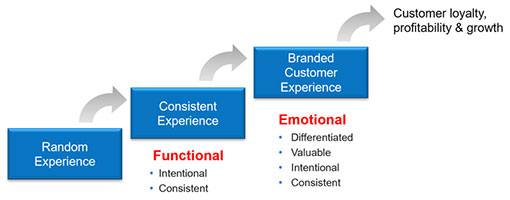
“To do this, you want to create a memorable ‘peak of emotion’ somewhere in your journey that heavily outweighs any negative moments that the customer experiences. You also want to ensure that the experience ends on a high. Getting these two parts right is essential.”
So, one key engagement strategy is to add a moment of significant positive emotion, which the customer will forever associate with your brand.
John adds: “O2 were one of the early pioneers of this strategy. They were in an industry where it was easy for customers to move away from their brand and choose a cheaper alternative.”

John Aves
“So, they needed to create value beyond the handset and price plan, which they did by establishing the Priority Club structure.”
“This structure gave its loyal customers access to music and sporting events at the O2 Arena on preferential terms and led to a different kind of relationship with their customers. They rewarded customer loyalty with experiences which created positive memories, which they will forever associate with the O2 brand. This is what formed the peak in positive emotion.”
Just remember, it is important to ensure the emotional peaks align with the purpose and values of your brand. This is why ‘brand’ is a key input to the Customer Promise development phase described above in point 1.
3. Employ a “Fix It Or Feature It” Strategy
There may be some unavoidable negative moments in your customer journey, but fixing the problem isn’t the only way to overcome the negative and improve the customer experience.
You can either remove the negative issue altogether – which can be costly and sometimes impossible – or find ways to add value and ‘feature’ the potentially negative experience in a positive light.
John is an advocate of this strategy, giving it the tagline “fix it or feature it”, and highlights Disney as a great example of a company that deals innovatively with pain points.

Disney is a great example of a company that innovatively removes pain points, such as queues, with the “fix it or feature it” strategy.
John says: “Look at how they engage customers who are queuing. Queues are designed to entertain, circling around interesting shows and entertainers, as well as including interactive televisions that you can play games on, Disney characters coming up and saying hello and prompts to interact with the company via social media.”
The result is that customers sometimes have to wait in line for 45 minutes and yet feel like they have had a fun time whilst in the queue.
4. Provide Opportunities for Potential Customers to Engage With Products
To spark customer interest in your brand, it can be good to look for non-traditional ways of engaging them with your products, and companies are coming up with some innovative ideas for doing this to stand out of the crowd.
For example, in 2017 John Lewis invited customers to have a sleepover in three of its stores across the UK, giving the event the tagline “try before you buy”.
Then there is IKEA, who recently launched a pop-up restaurant in the trendy London district of Shoreditch, to go beyond the confines of their stores and engage with a new base of potential customers. They did the same in Paris, Toronto and Oslo as well.
So, while the first three strategies were centred around the idea of engaging customers who are already at some stage of their customer journeys, it is important to think about how they can get onto that journey in the first place.
It’s becoming about how we can create experiences that customers will remember, generating those emotions that customers will positively associate with your brand.
John Aves says: “Again, it’s becoming about how we can create experiences that customers will remember, generating those emotions that customers will positively associate with your brand. In these examples, John Lewis and IKEA were very clever in using behavioural science to ‘nudge’ customers toward their brand.”
“In fact, engaging potential customers with products and applying principles of behavioural science into journey designs can lead to real engagement. Just take airports, for example.”
“Most airport shopping is done on impulse, and whoever designed them knew this. In many cases, you’ll be told to be at the airport much earlier than you really need to be and forced to walk through a duty-free shop to reach your gate. Not only that, the path will twist and turn, so you’re surrounded by different products, with no easy way out and lots of time on your hands.”
In terms of how customer psychology can be used to engage customers with products in digital customer experiences, one simple way would be to change the way we present options to customers.
In the contact centre, it can be easy to overwhelm customers with options; however, if we present just two or three options, we avoid ‘cognitive overload’ and simplify the buying process. This increases the chances of the customer buying something.
For more on utilising cognitive biases in the contact centre, read our article: Customer Psychology: The Key to Better Contact Centre Conversations
5. Combine Personalisation With Proactivity in the Areas That Matter Most
Personalising your website to present customers with options that are most likely to interest them, based on their search history, is a basic step that many organisations are taking to increase customer engagement. However, some brands do this better than others.
According to John Aves: “Amazon are particularly good at this, as they have added a section to their website that says something along the lines of ‘people who viewed this item were also interested in…’. This engages customers with more of their products which they are likely to find relevant.”
These personalisation strategies have been around for a while, with some organisations even changing their websites from country to country – not just in terms of language – but in terms of the information given with products, to meet differing preferences.
Yet it is a mix of personalisation and proactivity, for which the necessary data is often collated in the contact centre, that many companies are starting to pay more attention to.
To create a proactive strategy that engages customers, we need to again look closely at our customer experience and begin to anticipate customer needs.
To create a proactive strategy that engages customers, we need to again look closely at our customer experience and begin to anticipate customer needs. Then we will be able to create rules in the customer journey for when is best to intervene and send a proactive message.
Sharing an example of how this can work well, John says: “With a recent banking client we found that when branch staff identified the ‘next best action’ and suggested a bank product that was relevant for the customer, it led to higher levels of satisfaction with the service received and increased revenues for the bank.”
For more ideas for service strategies like this, read our article: 7 Ideas for Proactive Customer Service
For more on keeping customers engaged with your brand, try reading our articles:
- The Top 10 Latest Trends in Digital Customer Engagement
- 6 Customer Engagement Strategies That Are Backed Up by Behavioural Science
- Top Ten Tips for Customer Engagement
Author: Robyn Coppell
Published On: 27th Feb 2019 - Last modified: 14th Aug 2025
Read more about - Customer Service Strategy, Customer Engagement, Customer Experience (CX), Customer Journey, Customer Loyalty, Editor's Picks, Emotion, Retention, Service Strategy




